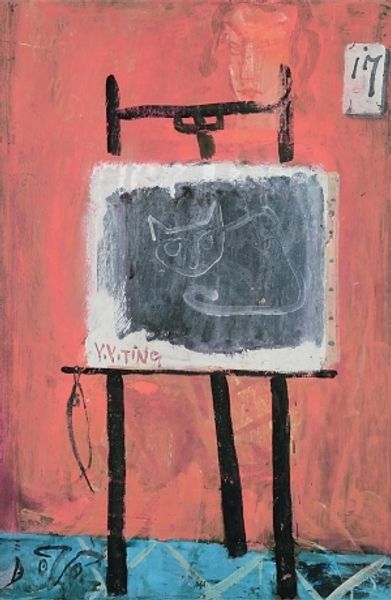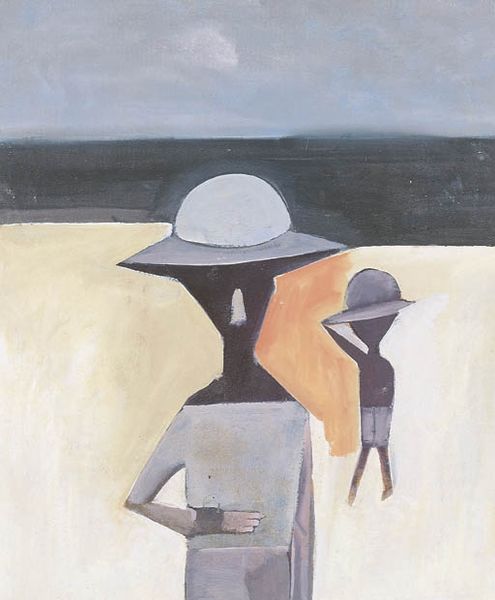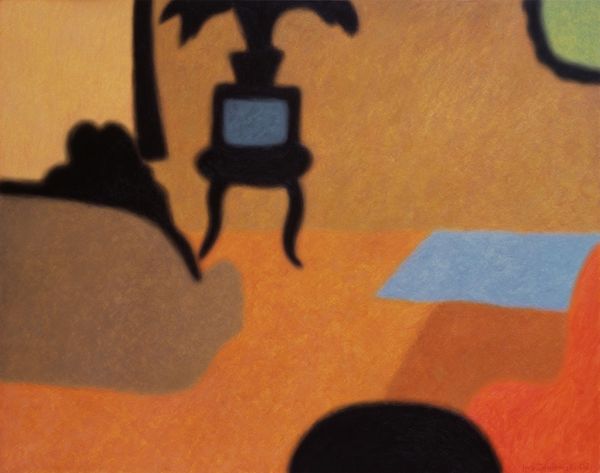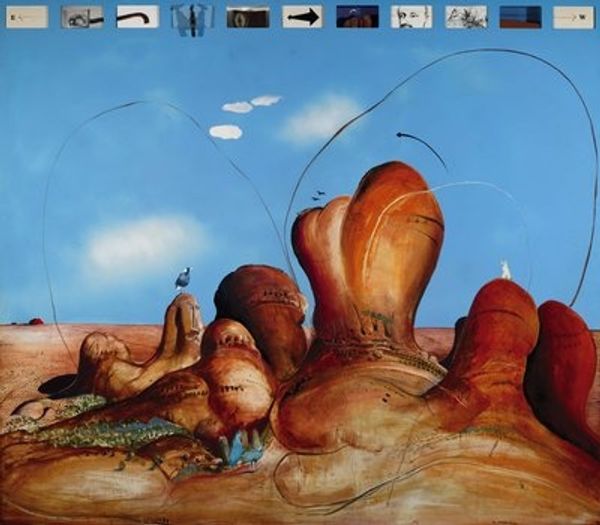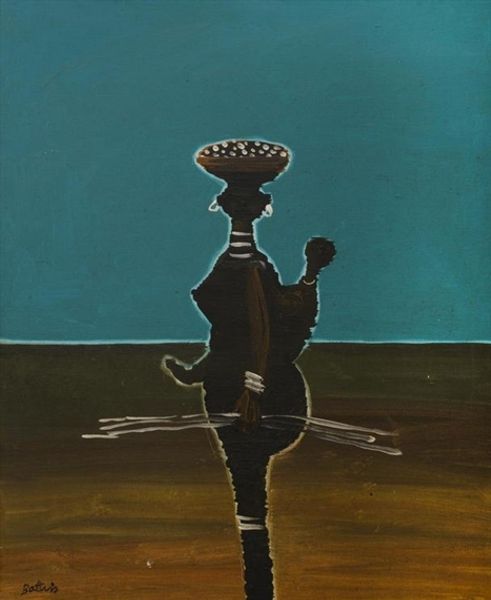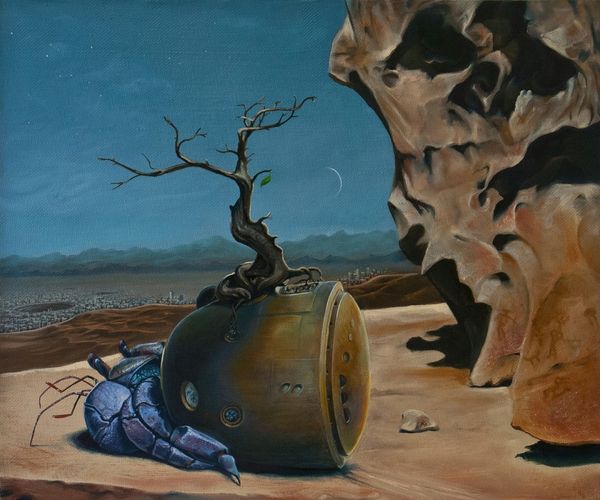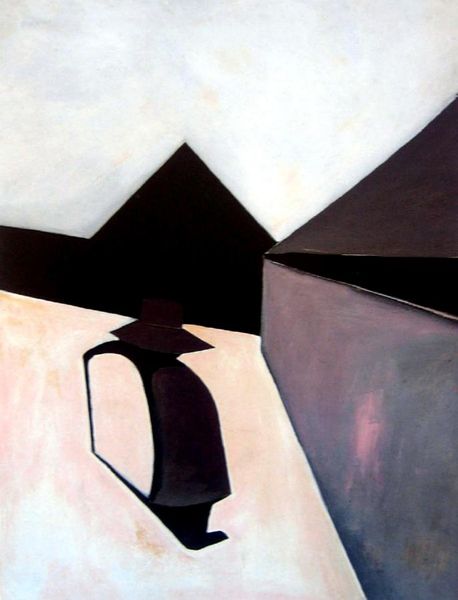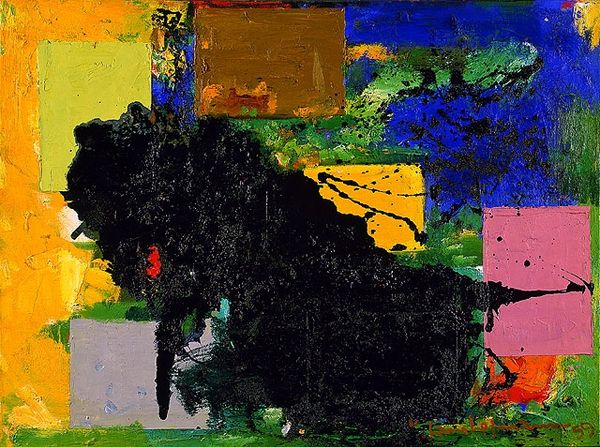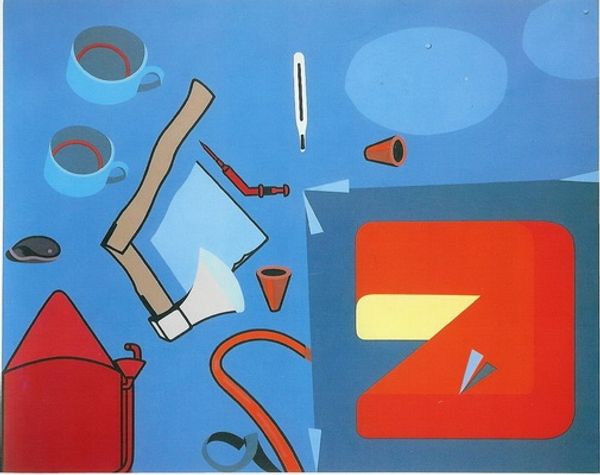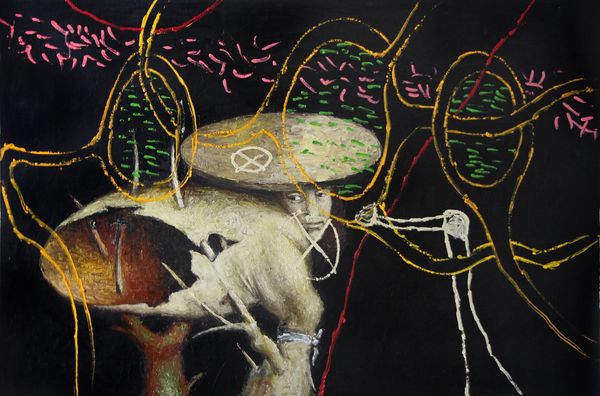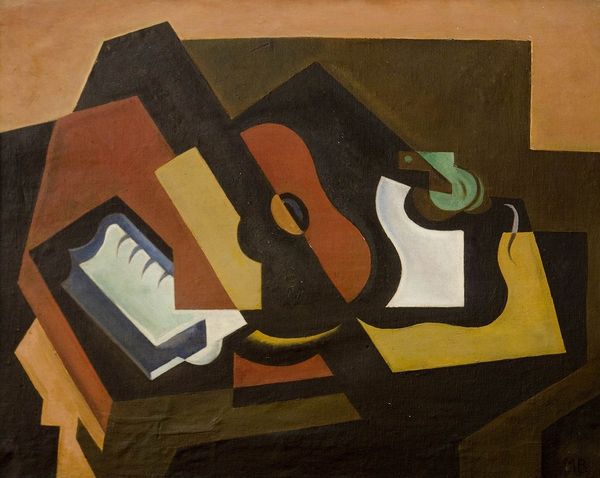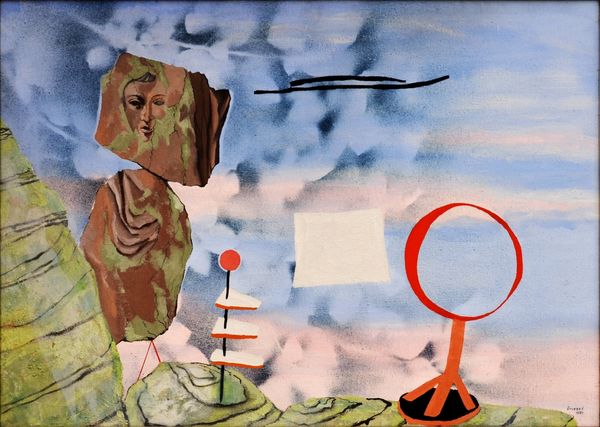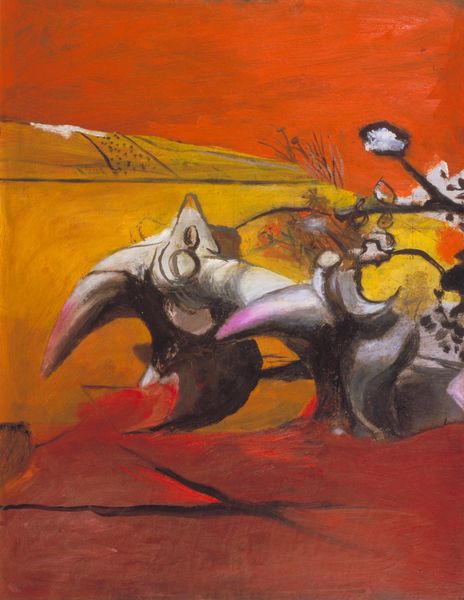
painting, acrylic-paint
#
portrait
#
sky
#
painting
#
landscape
#
acrylic-paint
#
acrylic on canvas
#
naive art
#
painting art
#
watercolour illustration
#
modernism
Copyright: Sidney Nolan,Fair Use
Curator: Sidney Nolan's 1946 painting, "Ned Kelly", confronts us with an iconic figure. What's your immediate take on this stark image? Editor: The thing that strikes me first is how much empty space surrounds that armored figure. It really emphasizes the material isolation – all that open space feels barren, economical, almost…bleak. And look at those simple washes of colour! Curator: Yes, but within that apparent simplicity lies a complex web of cultural meaning. The square helmet immediately evokes Ned Kelly, an infamous Australian bushranger, but it’s more than just a portrait. It’s a symbol of rebellion, of the struggle against authority, deeply embedded in the Australian psyche. Think of that helmet – almost like a medieval visor – transforming a man into an archetype. Editor: And that archetypal figure is constructed from acrylic paint applied with minimal fuss. What appears like naive art also makes a sophisticated use of newly available industrially-produced paints that allow an artist to work rapidly. And doesn't the landscape remind you that the outback itself shaped the legend and how that figure was later marketed and consumed? Curator: Precisely! The landscape becomes a stage, almost a psychological space. It reminds us that symbols evolve. Nolan transforms a historical outlaw into a national myth, painted with materials expressive of that period. His choices invoke both an artistic freedom but also the constraints within Australia during and immediately following the war years. Editor: To me it really boils down to that helmet— it’s such an austere object. I'm thinking of the actual labour, too, involved in fabricating the original armor. Now it's reduced to an affordable paint, a consumer good almost, conveying stories through inexpensive materiality. Curator: So it brings together industrial fabrication with raw artistic vision? A reflection of history and national identity and… Editor: Exactly. What the image appears to be saying isn't always how that image was conceived of or its historical circumstances. And as the figure rides away into that abstracted landscape, it pulls away from those very beginnings as well. Curator: Well, examining that landscape from both your material perspective and my emphasis on iconographic meaning reveals much more depth.
Comments
No comments
Be the first to comment and join the conversation on the ultimate creative platform.
